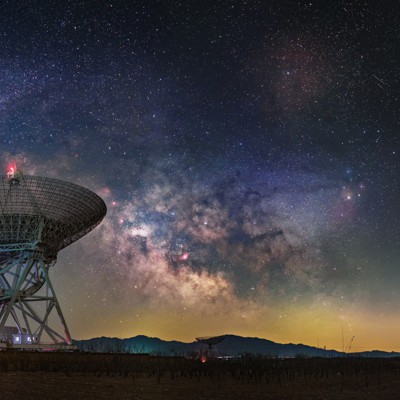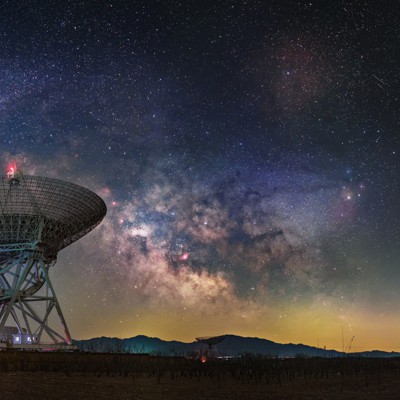## Is this the Future of Space? NASA Bets $2 Million on Cutting-Edge Tech
Forget spaceships and rockets, the next frontier of space exploration might just be hidden in a lab, powered by innovative technology. NASA is putting its money where its mouth is, awarding a juicy $2 million contract to a consortium of companies pushing the boundaries of what’s possible. This isn’t just about building better spacesuits or faster rockets, this is about harnessing the power of disruptive technology to unlock the secrets of the cosmos.

A Two-Step Journey to Space Supremacy

NASA’s latest initiative, the Space Technology Research, Development, Demonstration, and Infusion – 2025 (SpaceTech REDDI 2025) program, is set to revolutionize the landscape of space exploration and commercial ventures. This multi-award contract, with a total value of $2 million, represents a significant investment in fostering innovation and propelling the United States to the forefront of space technology.

Phase One: A Multi-Stage Selection Process
The SpaceTech REDDI 2025 program utilizes a two-step process for Phase one, ensuring a rigorous and comprehensive evaluation of proposed technologies.
- Step A: Open Submission
-
This initial stage welcomes proposals from a wide range of organizations and individuals, encouraging diverse perspectives and fostering a competitive environment.
- Step B: Invitation-Only
-
Following a meticulous review of Step A submissions, NASA will selectively invite a subset of promising proposals to proceed to Step B. This invitation-only stage signifies a heightened level of scrutiny and a commitment to nurturing the most promising concepts.
- Feasibility:
-
The proposed technology must be technically sound and demonstrate a realistic pathway to implementation.
- Innovation:
-
Proposals should showcase novel concepts and approaches that advance the state of the art in space technology.
- Impact:
-
The potential benefits of the proposed technology to space exploration, commercial ventures, or both, are paramount considerations.
-
Encourage the development of new space-based products and services.
-
Attract private investment in the space sector, fostering a vibrant and dynamic ecosystem.
-
Create new job opportunities and stimulate economic growth in related industries.
Navigating the Competitive Landscape
Applicants vying for a share of the $2 million funding face a challenging landscape characterized by intense competition and stringent evaluation criteria. NASA’s selection process prioritizes proposals that demonstrate:
Driving Global Competitiveness and Economic Growth
Beyond its direct impact on technological advancements, NASA’s SpaceTech REDDI 2025 program aims to achieve broader objectives that extend to economic development and global competitiveness.
Boosting U.S. Leadership in Space
By fostering innovation and accelerating the development of cutting-edge space technologies, NASA seeks to solidify the United States’ position as a global leader in the space domain.
This leadership extends beyond purely scientific endeavors; it encompasses economic competitiveness, national security, and the ability to leverage space resources for the benefit of humanity.
Fueling Commercial Economic Development
The program recognizes the immense potential of space technology to drive commercial economic growth. By providing funding and support to promising ventures, NASA aims to:
Collaborating for Progress
NASA’s approach emphasizes collaboration as a key ingredient for success.
The agency actively seeks partnerships with industry, academia, and international organizations to leverage collective expertise, share resources, and accelerate the pace of innovation.
Conclusion
The recent $2 million contract awarded by NASA to foster space technology innovation stands as a significant investment in the future of exploration. This initiative, focused on developing cutting-edge solutions for challenges encountered during deep-space missions, underscores NASA’s commitment to pushing the boundaries of human ingenuity and technological advancement. By supporting the development of novel technologies in areas like propulsion, life support, and autonomous systems, NASA aims to pave the way for future missions to Mars, the outer solar system, and beyond.
The implications of this contract extend far beyond the realm of space exploration. The innovations born from this initiative have the potential to revolutionize various fields on Earth. Technologies developed for extreme environments in space often find applications in sectors like healthcare, energy, and manufacturing. This cycle of innovation, driven by the pursuit of space exploration, holds the key to solving some of humanity’s most pressing challenges here at home.
This NASA contract represents more than just financial support; it embodies a vision of a future where human ambition and technological prowess merge to unlock the secrets of the cosmos and improve life on Earth. The journey to the stars is a journey that benefits us all, and this investment is a powerful testament to the transformative power of space exploration.
